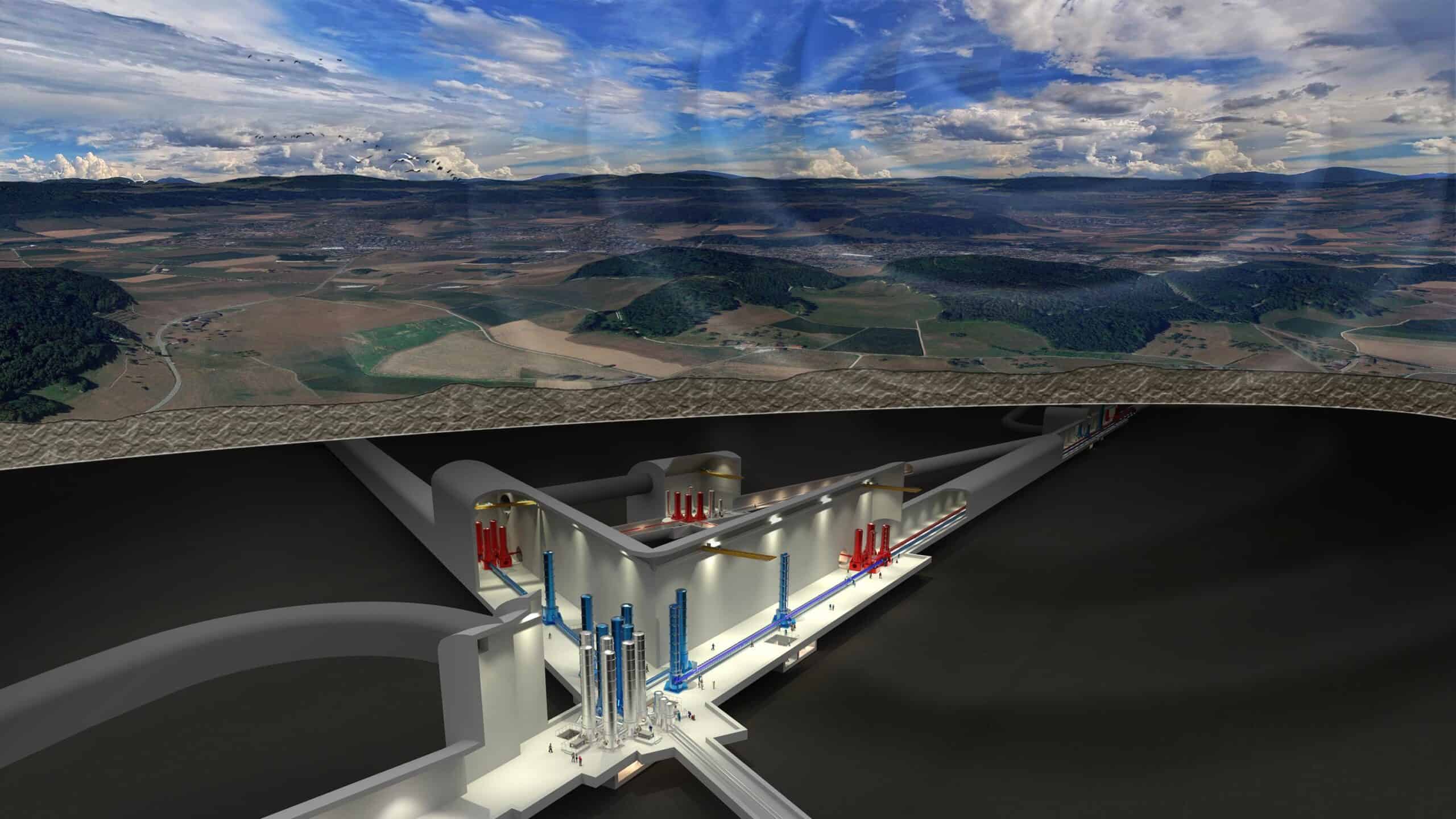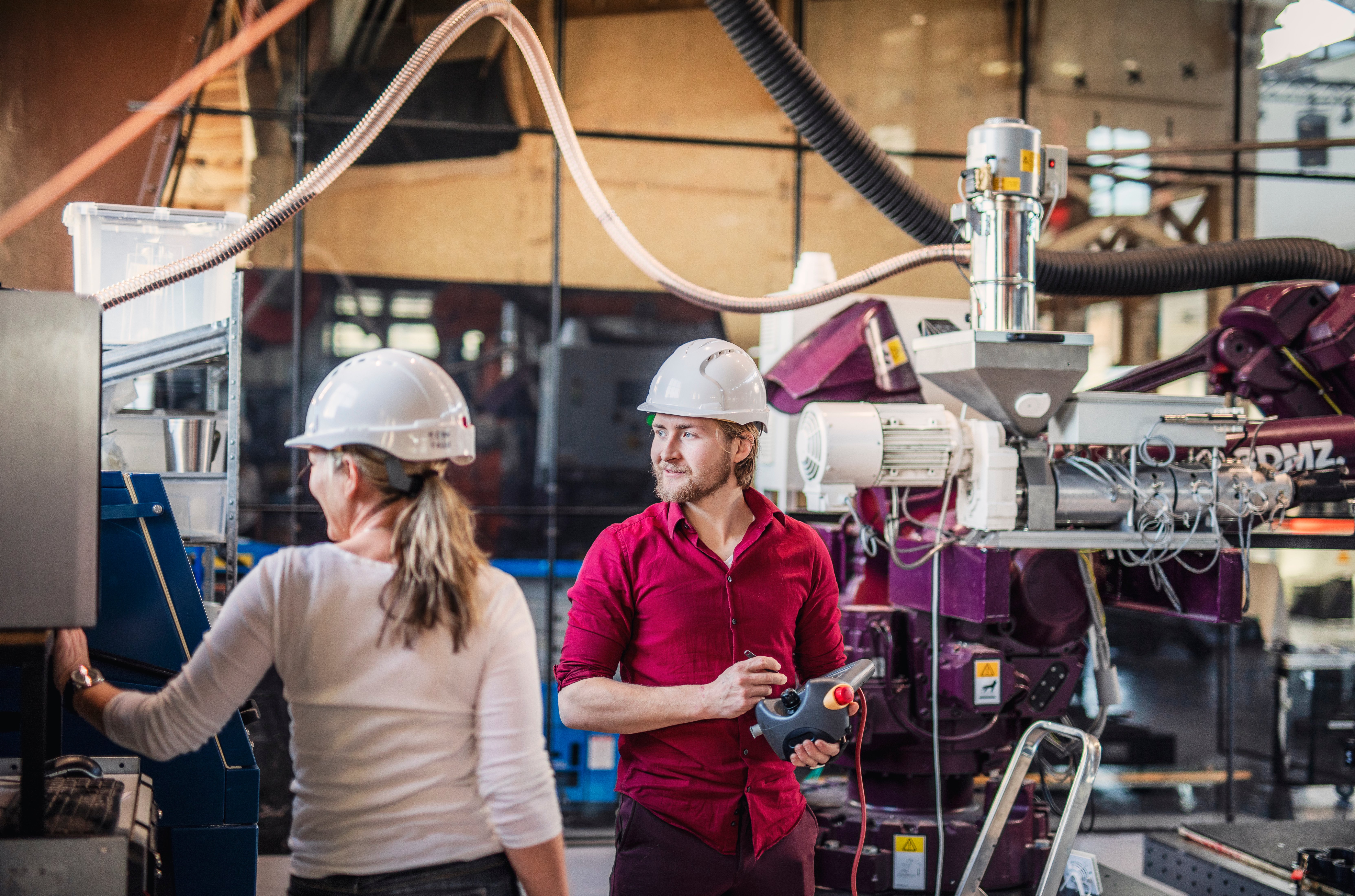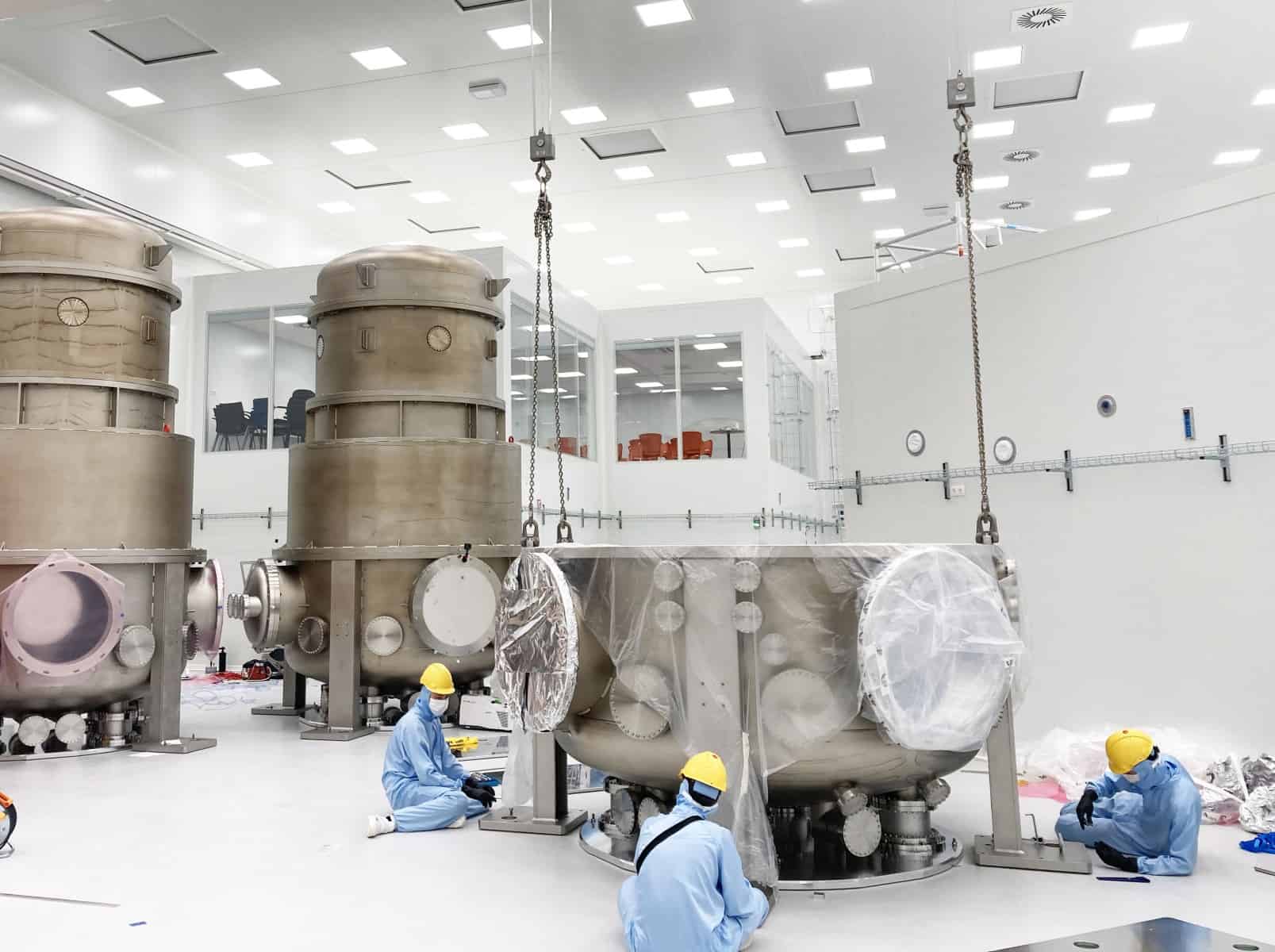
A plane’s black box is the most sought component when reconstructing the precise dynamics of plane accidents, as it contains all the secrets about the crash. In the Dutch city of Maastricht, there is a building often referred to as the black box, and it can also help reveal many things we don’t know much about, such as the universe’s origins.
- A lab of the Maastricht University is the testbed for technologies to use in the future Einstein Telescope (ET);
- To accommodate the construction of a first-of-its-kind telescope as the ET, a wealth of technologies must be tested;
- The final decision on where the telescope will be located is expected by the end of 2024;
Once the headquarter of the local newspaper De Limburger, the black box is now at the disposal of Maastricht University. There, thousands of square meters host the faculty of Science and Engineering. Entering the building, a plastic model of the Einstein Telescope (ET) Pathfinder laboratory welcomes the visitors. The actual lab camouflages itself among the other research spaces and can be the key to unveiling the secrets we are looking for.
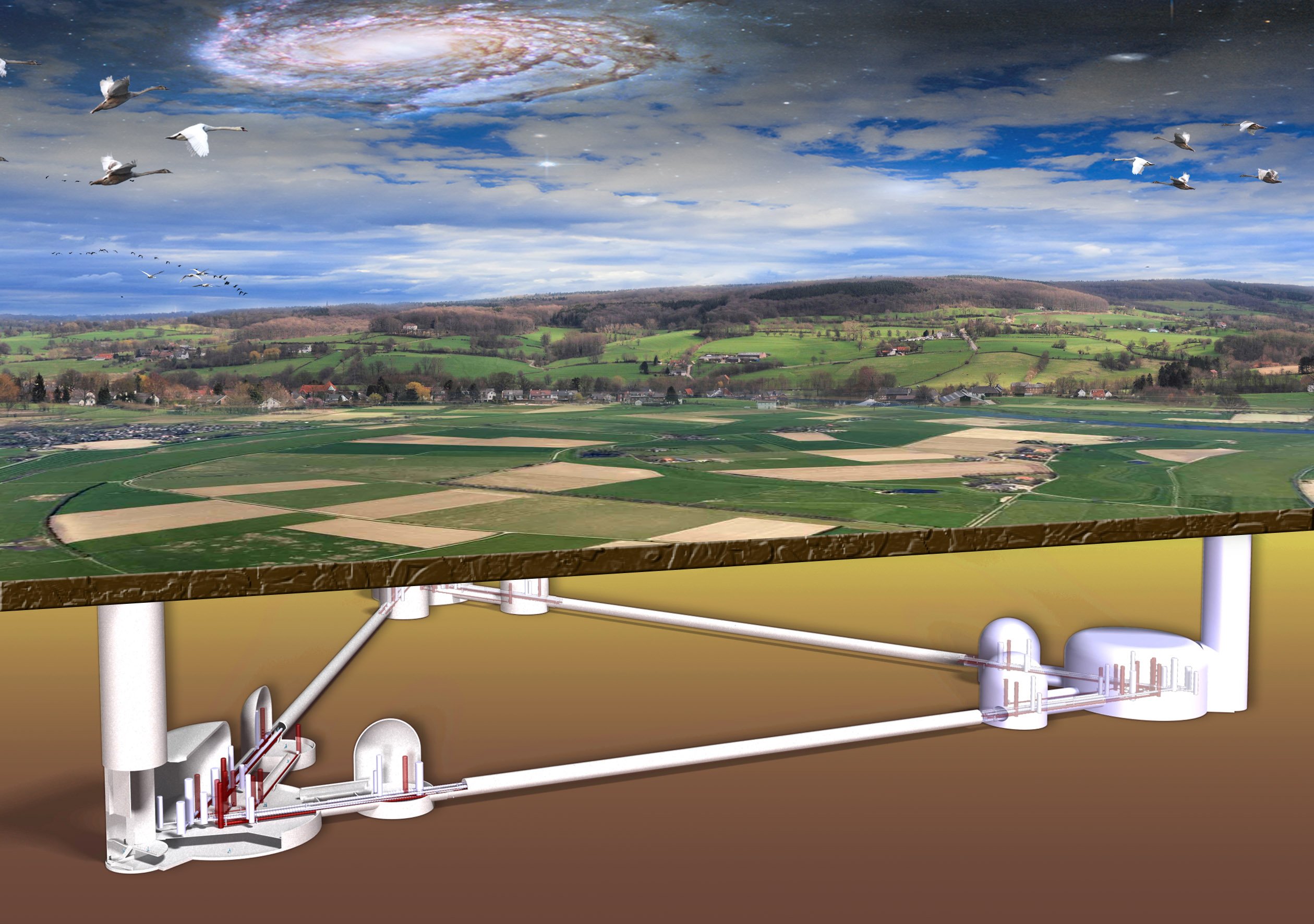
The ET is a proposed advanced gravitational waves observatory. Listening to these waves will shed light on the universe’s origins and the events connected to it. Whereas conventional space telescopes look up to the sky, this observatory measures gravitational waves 200 or 300 meters underground. No tunnels have been dug yet, though. Before the actual telescope is built, scientists simulate its functioning, testing new materials within the ET pathfinder laboratory (ETPF). The lab was founded as a partnership between NIKHEF – the Dutch National Institute for Subatomic Physics – and several other Dutch, Belgian, and German institutions.
Castle
There’s a white clean room with six to seven meters tall towers in the same place where the rotary printing press used to be. A visitors’ room allows seeing the giant clean room from above. The layout resembles the triangle-shaped one of the planned ET. The facility hosts a small prototype interferometer setup, using two independent laser systems to test different materials, coating, cryogenics, and more.
The ETPF consists of 6 towers, each built to contain a strong vacuum and house different parts of the experiment. These towers are connected by pipes, allowing the laser beam to travel uninterrupted between them. Each tower has a specific purpose.
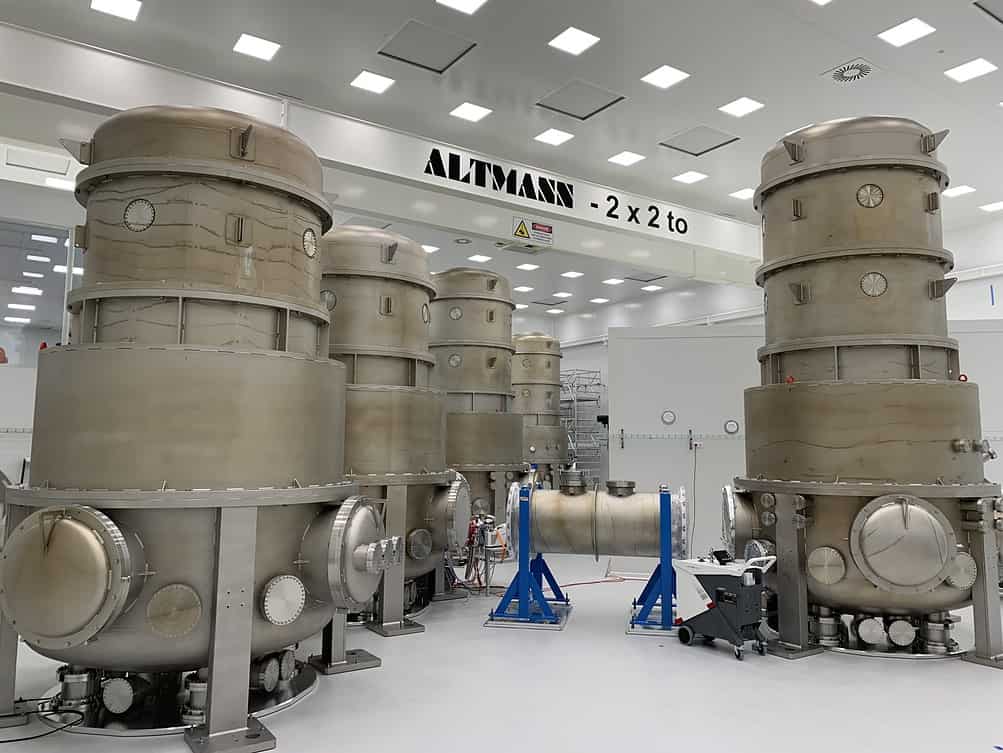
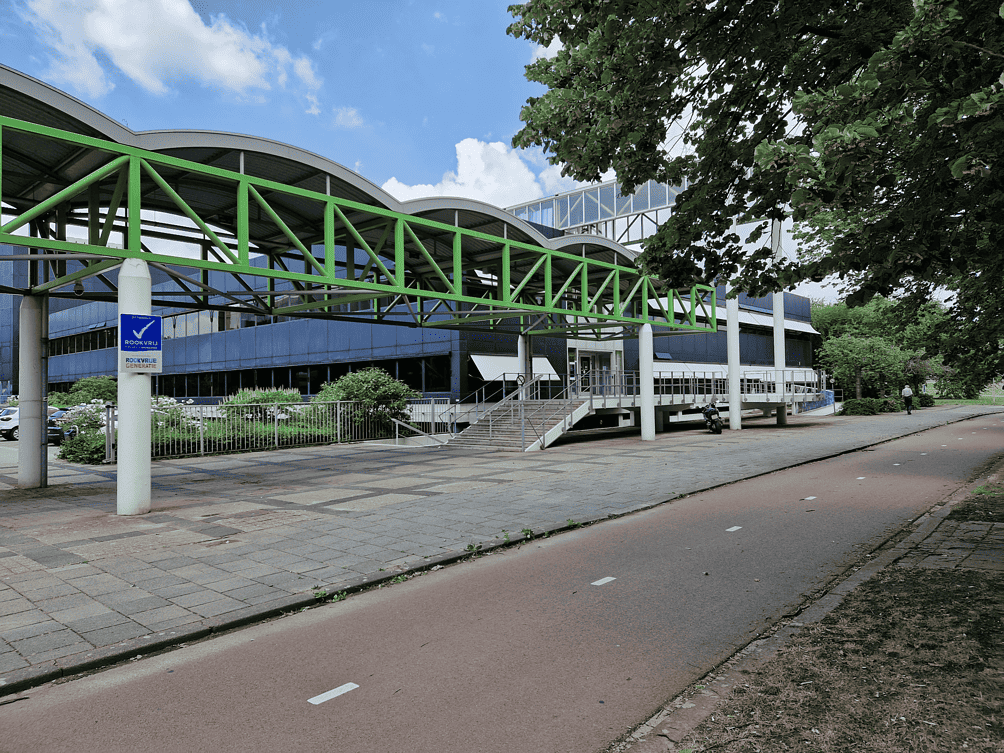
“Starting from the two smaller towers, the first one is called the injection tower, and it prepares the laser beam for the Interferometer,” explains Tobias Schoon, a Ph.D. student at the Department of Gravitational Waves and Fundamental Physics of Maastricht University. “The second is called the beamsplitter tower, which splits the incoming laser beam in two and sends them into the two arms. At the end of each arm is a bigger tower housing big mirrors, also called test masses. These send the beam back to the beamsplitter, creating interference. The two towers in between will house a similar mirror as the bigger towers, creating a cavity in each arm and making the interferometer even more sensitive.”
Overall, the ETPF still needs to be completed. “The first cavity should be ready by early 2024, as the full setup will be ready by 2026,” the researcher adds. Following the site decision, measurements of the actual ET won’t start until 2035, so there are still years ahead to research better components to go with it.
First of its kind
Currently, there is no interferometer in the world with ET specifics. The observatory would have a triangle layout, with ten kilometers-long underground corridors from one end to another. Existing telescopes – such as Virgo, located near Pisa, Italy – feature an L-shape. “Current detectors can identify one event per week, while the ET would have the capability to grasp up to one million events per year,” stresses Schoon.
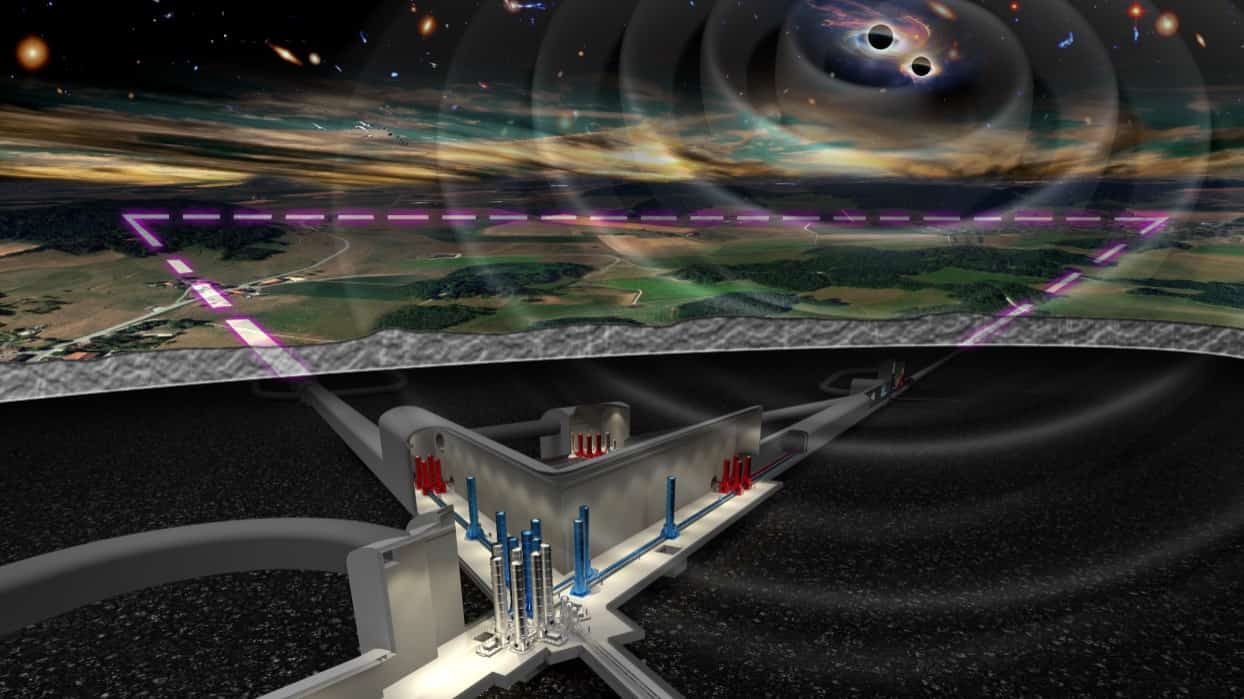
Italy and the Euregio Meuse-Rhine (EMR) region – the area intersecting Germany, Belgium, and the Netherlands, where also Maastricht is – are the primary candidates for hosting the ET. Italian PM Giorgia Meloni officially unveiled Rome’s bid to host the telescope in the decommissioned mine of Sos Enattos in Lula, Sardinia. No official bid has been presented by the EMR yet, as Germany might decide to run independently. A group of German scientists suggested Eastern Saxony as an alternative location for the telescope.
Such an infrastructure can have massive spillover effects on the region that hosts it, with new jobs created and talent attraction. Geological conditions are essential – the site must have low earthquake risk, and the soil has to be solid and stable – and so is the region’s attractivity regarding living standards and academic and knowledge ecosystem. The final decision on where the ET will be located is expected by 2026.
Big experiment
The ETPF is, like other spaces inside the black box, an experimentation room. The lab will try new laser wavelengths that go beyond the 1064 nm – the standard used in current gravitational wave detectors – as experimental new silicon-based mirrors can’t support them. The same can be said for new coatings or cryogenic systems: a wealth of research on many areas needs to be done to accommodate a potential groundbreaking observing tool as the ET promises to be.
Schoon’s work is a piece of the puzzle that might fit into the future observatory. “He’s studying non-linear light properties of these new wavelengths to deal with problems that can emerge using them. “When I first visited the lab, I was impressed by it and the idea of researching new things, adding to the huge puzzle that physics is,” he says.

As a Ph.D. student, he enjoys the knowledge-sharing environment around the ETPF. “We operate in work packages, with different competencies from each discipline involved. Being a three-countries effort, there’s a lot of expertise to draw from. In the end, it’s a big experiment where a lot of knowledge and people are involved, and as an academic, you get to know a lot of exciting things that aren’t even connected to your research domain,” he adds.
Cooperation for knowledge
Whether or not the telescope will be built in the EMR, the ETPF will remain a research lab within Maastricht University to serve the purpose of developing and testing new technologies for future gravitational wave detectors. Competition might be tense between countries to get the observatory, while for scientists, cooperation comes first. Openness and knowledge sharing remain the tenets to adhere towards a mission-oriented endeavor: decrypting the biggest black box we could ever imagine: the universe.


